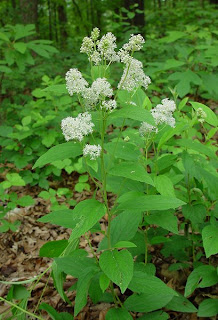OAK

Latin Name: Quercus alba
Alternate Names: White Oak, Tanner's Bark, Royal Protector, English Oak, Common Oak, Green Oak, Red Oak, Black Oak
Family: FAGACEAE
Parts Used: Bark, galls (growths that are produced in reaction to fungi or insects).
Properties: Anti-inflammatory, Antiseptic, Astringent, Hemostatic, Styptic, Tonic.
Internal Uses: Anal Prolapse, Bloody Urine, Diarrhea, Dysentery, Hemorrhage, Hemorrhoids, Uterine Prolapse
Internal Applications: Tea, Tincture, Capsules.
The high tannin content is responsible for a wide range of its activity. Tannins bind with protein of the tissues, thus making them impermeable to bacterial invasion and infection, while at the same time strengthening the tissues.
The high tannin content is responsible for a wide range of its activity. Tannins bind with protein of the tissues, thus making them impermeable to bacterial invasion and infection, while at the same time strengthening the tissues.
Topical Uses: Bleeding Gums, Burns, Capillary Weakness, Dermatitis, Eczema, Hemorrhoids, Insect Bites, Laryngitis, Leukorrhea, Nosebleeds, Pharyngitis, Ringworm, Sore Throat, Tonsillitis, Varicose Veins, Wounds
Topical Applications: Gargle or mouthwash for laryngitis, pharyngitis, sore throat and tonsillitis. Mouthwash for bleeding gums. Compress for burns, cuts, eczema, contact dermatitis, hemorrhoids, ringworm, varicose veins and weak capillaries. Enema, suppository and/or sitz bath for hemorrhoids. Douche for leukorrhea. Snuff for nosebleeds. Leaves as a poultice for insect bites.
Culinary uses: Acorns (best from White Oak) are processed by leaching out the tannins in water for at least 24 hours, then grinding into a meal. Acorns can also be roasted as a coffee substitute.
Energetics: Pungent, Bitter, Cool, Dry.
Chemical Constituents: Tannins (phlobatannin, ellagitannins, gallic acid), quercin. Galls are even higher in tannins than the bark.
Contraindications: Oak galls are extremely astringent; use only in small quantities. Use Oak bark for no longer than one month continuously.
Comments: The genus name Quercus is from a Celtic word, quer, meaning 'fine' and cuea, or 'tree'. The Oak tree was sacred to the Druids and has long been a symbol of fertility and immortality. In the past, European and American women wanting to get pregnant would carry an acorn as a talisman. In Nordic mythology, the Oak was associated with thunder gods as oak groves seem to attract much lightning. To the Romans, the Oak symbolized bravery, and military heroes were often crowned with a wreath of Oak leaves. Oak is used as a Bach Flower Remedy to treat despair and despondency. Its valuable, sturdy timber has led to many forests being cut down. It has been used to tan leather.
The common name oak includes the species Quercus alba (White oak), Quercus robur (English Oak, Common Oak), Quercus virens (Green Oak), Quercus petraea, Quercus rubra (Red Oak) and Quercus tinctoria (Black Oak) all of which are used interchangeably with Quercus alba.
The common name oak includes the species Quercus alba (White oak), Quercus robur (English Oak, Common Oak), Quercus virens (Green Oak), Quercus petraea, Quercus rubra (Red Oak) and Quercus tinctoria (Black Oak) all of which are used interchangeably with Quercus alba.

